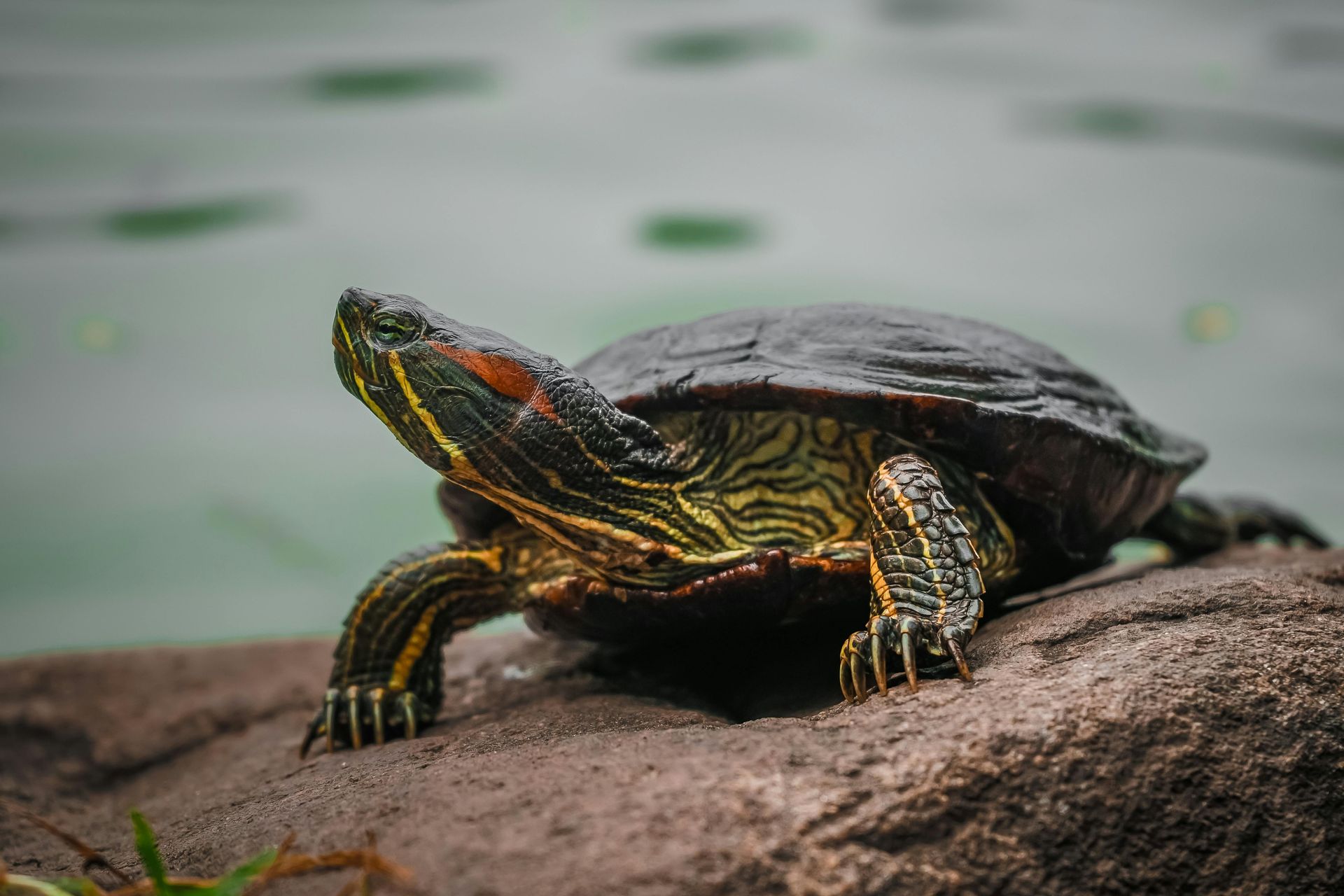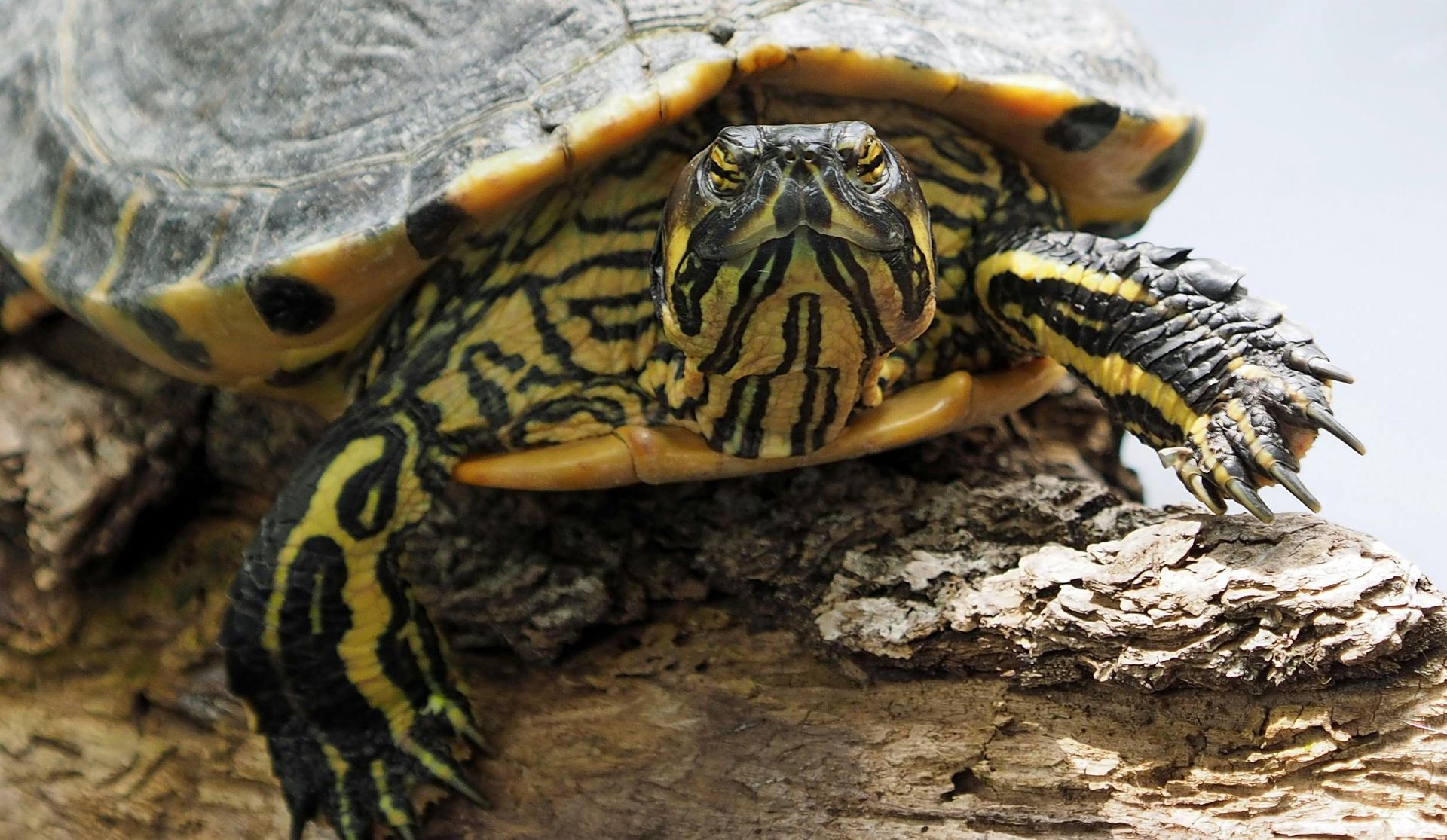Turtles are highly adaptable reptiles. Found in freshwater, brackish, and marine environments around the world, turtles play essential roles in maintaining healthy ecosystems by controlling aquatic vegetation, scavenging, and dispersing seeds.
Turtles vary greatly in size, from the small Eastern Box Turtle measuring about 5 inches to the massive Leatherback Sea Turtle, which can grow over 6 feet long and weigh up to 2,000 pounds. Most turtles have streamlined shells and webbed feet or flippers for efficient swimming. Common species include the Painted Turtle and the Red-eared Slider. They are omnivorous, feeding on aquatic plants, insects, fish, and carrion.
Turtles are generally solitary and can live for several decades. Female turtles lay eggs on land, usually in sandy or muddy nests. After several weeks or months of incubation, hatchlings emerge and make their way to the water. Most young turtles face high predation rates, but those that survive can live long, productive lives.
Natural predators include raccoons, foxes, birds, and large fish. Human-related threats such as habitat destruction, pollution, and road mortality also significantly impact turtle populations. Despite these challenges, many turtle species have shown remarkable resilience

For your safety and the well-being of wildlife, please observe animals from a distance and avoid touching or disturbing them. If you encounter an animal that appears injured or in distress, contact a licensed wildlife rescue organization for guidance before intervening.
Found An Animal? Not sure how to help a wild animal in need? Learn when to step in, who to call, and how to help safely.
Did You Know?
- Some turtles, like the Painted Turtle, can survive months underwater by absorbing oxygen through their skin.
- The Leatherback Sea Turtle is the largest turtle species and can dive over 3,000 feet deep.
- Turtles have existed for over 200 million years, making them older than dinosaurs.
- Unlike tortoises, most turtles have flat, streamlined shells for swimming.
- Sea turtles can travel thousands of miles between feeding and nesting sites.
- The temperature of a turtle’s nest determines the sex of the hatchlings.
- Turtles use their strong sense of smell to find food and navigate their environment.
- Some species, like the Box Turtle, can completely close their shells for protection.
- Turtles can hibernate in the mud at the bottom of ponds during winter.
- Western pond turtles very rarely use vocalizations. They communicate through gestures such as hiding in their shell and biting.
Problems Faced In The Wild
- Habitat Loss: Wetland drainage and coastal development reduce nesting and foraging areas.
- Road Mortality: Turtles are frequently struck by vehicles while migrating to nesting sites.
- Pollution: Plastic debris and chemical contaminants harm turtles and reduce prey availability.
- Climate Change: Rising temperatures and altered rainfall patterns affect nesting success.
- Illegal Collection: Turtles are often taken from the wild for the pet trade.
- Predation: Eggs and hatchlings are highly vulnerable to predators like raccoons and gulls.
Tips For Cohabitation
- Preserve Wetlands: Support conservation efforts to protect natural water sources.
- Avoid Handling Wild Turtles: If necessary, help them cross roads in the direction they are heading.
- Dispose of Waste Properly: Keep waterways clean to protect turtles and their prey.
- Install Wildlife-Friendly Fences: Prevent turtles from entering hazardous areas like roads.
- Reduce Plastic Use: Minimize plastic waste to protect aquatic habitats.
- Educate Others: Share the ecological importance of turtles and how to protect them.



